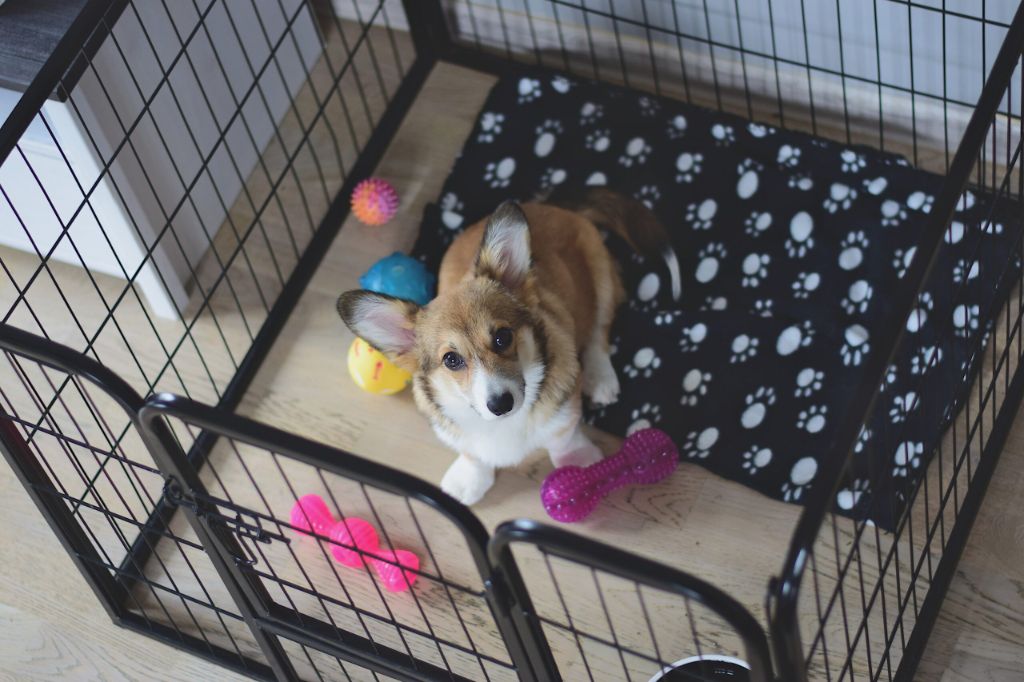The challenges of raising a dog while working full time
For many dog owners who work full-time jobs, the biggest challenge is providing adequate care when they are away at work. Working 9-5 means less time at home with your dog, which can lead to issues like separation anxiety, destructive behaviors from boredom, and insufficient exercise (PetMD).
Dogs are social creatures that thrive on companionship, so being left alone for 8+ hours can be very difficult for them. Dogs require daily exercise, mental stimulation, and social interaction. Without enough activity and attention, they may develop problem behaviors like excessive barking, chewing, digging, or aggression (AKC).
While it’s not impossible to raise a happy dog while working full-time, it does require commitment to providing exercise, training, attention, and enrichment on evenings and weekends. Utilizing dog walkers, doggie daycares, puzzle toys, and training can help, too. With proper care, dogs can adjust to owners who work outside the home (Rover).
Preparing your home
One of the most important things you can do to prepare for leaving your dog home alone is to properly dog-proof your home. Make sure to put away anything that your dog could choke on or that is poisonous if ingested, like household cleaners or small objects. Keep trash cans out of reach and make sure any food is securely stored.[1]
It’s also a good idea to set up a safe space or crate for your dog to relax in while you’re gone. The crate should be just large enough for them to stand up, turn around, and lie down comfortably. Place familiar blankets and toys inside to help them feel secure. If crate training is new for your dog, start leaving them for short periods while you’re home to get them used to it.[2]

Installing cameras around your home can give you peace of mind while away. You’ll be able to check in and make sure your dog is doing alright. Look for cameras with two-way audio so you can talk to your pup if needed.
Keeping your dog active
One of the most important things you can do for your dog while you’re at work is ensure they get enough physical activity. Dogs that are left alone all day with no exercise can become restless, destructive, or develop anxiety. Aim to walk your dog for at least 30-60 minutes total each day.
Taking your dog for a brisk morning walk before you leave for work helps start their day on a positive note and gets their energy out. It’s also important to walk them as soon as you get home so they can relieve themselves. You may also want to play with interactive toys like balls or frisbees after work to help tire them out.
Consider hiring a dog walker to take your pup out midday or bringing them to doggy daycare a few days a week. This provides socialization, mental stimulation, and exercise. Rotate toys frequently to keep your dog engaged throughout the day. Food puzzle toys and frozen Kongs with peanut butter are great for keeping your dog busy while you’re gone.

Make sure your dog gets at least 60-90 minutes of activity split between the morning, midday, and evening while you’re working. This will prevent boredom and make sure their physical and mental needs are met.
Preventing separation anxiety
Separation anxiety is common in dogs, especially in breeds like Cavalier King Charles Spaniels and Labrador Retrievers (https://bondvet.com/b/how-to-prevent-separation-anxiety-in-dogs). It’s a distressing condition where dogs become extremely anxious when left alone, leading to problem behaviors like barking, destruction, and toileting inside. Preventing separation anxiety is crucial for maintaining your dog’s well-being and your home’s condition while you work.
One highly effective method is getting a second dog so they can keep each other company (https://www.akc.org/expert-advice/training/dog-separation-anxiety/). Introducing a new dog requires proper planning and precautions, but two dogs together will alleviate loneliness and boredom. Just be sure they get along well before leaving them unsupervised.
You should also gradually introduce alone time from an early age. Start with very brief departures, then slowly build up the duration. Always make sure your dog has stimulating toys or activities before leaving. Food puzzles, chews like frozen Kongs, and interactive feeders are great for occupying them while you’re gone.

With patience and preventative steps, you can curb separation anxiety and raise a happy, well-adjusted dog despite your work schedule.
Feeding your dog
When you’re away at work all day, you won’t be able to feed your dog at set mealtimes. This is where automated feeders come in handy. These allow you to pre-program the times and portion sizes so your dog gets fed on a consistent schedule. According to one source, “Some dogs graze while others have designated feeding times” (https://www.hippo.com/blog/leaving-dog-home-alone-while-at-work).
How much and when you feed depends on your dog’s age, size, and activity level. Feed puppies three to four times a day, while adult dogs do well with two meals. Feed active dogs more calories. Program multiple small meals into the automated feeder to prevent overeating.
Always provide access to fresh, clean water. Use heavy, spill-proof bowls. Check the water level daily in case the feeder malfunctions.
Training your dog
Proper training is crucial for dogs that will be left alone for long periods. Focus on housetraining, basic obedience, crate training, and stopping nuisance barking. Housetraining your dog teaches them to eliminate outside rather than indoors. Take your dog out frequently and reward them with treats and praise when they go to the bathroom in the right spot outside. Never punish accidents inside, just calmly take them out. Obedience training establishes you as the leader and gets your dog to listen to commands like “sit” and “stay”. Use reward-based methods and keep training positive. Work in short sessions of 5-10 minutes.
Crate training accustoms your dog to relaxing quietly in their crate when you’re gone. Make it comfortable with blankets and toys. Start with short sessions of 10-30 minutes and reward calm behavior in the crate. Slowly increase the time. The crate should never be used punitively. Stop nuisance barking by identifying causes like boredom. Try increasing exercise, mental stimulation, and access to views outside. Reward quiet behavior with treats. Consider citronella or ultrasonic anti-barking devices as a last resort. Consistent training will lead to a well-behaved dog at home alone.
Choosing the right dog for your lifestyle
When working full-time, it’s important to choose a dog that fits well with your lifestyle. Some considerations when selecting an age and breed:
- An adult dog over 1 year old may be calmer and require less supervision than a young puppy.
- Some breeds like Cavalier King Charles Spaniel and Basset Hound are known for being mellow and relaxed.
- Higher energy breeds like Border Collies may need more exercise and stimulation.
- A smaller dog may do better crated during work hours than a larger breed prone to separation anxiety.
If getting a puppy, try to arrange bringing them home when you have some time off work to help get them settled in. House training a puppy requires frequent potty breaks which can be challenging while working full time [1].
Adopting an adult dog from a shelter is a great option, as their personality will already be apparent. Try to find a dog described as calm, house trained, and content with alone time. An adult dog may adjust more easily to a working owner’s schedule.
Providing Mental Stimulation
Mental stimulation is crucial for dogs left home alone for extended periods. Boredom can lead to destructive behaviors like chewing, digging, and barking. There are many ways to provide mental enrichment for your dog while you’re at work:
Food puzzles like the Outward Hound Nina Ottosson Brick Puzzle Dog Toy are great for keeping your dog engaged and rewarded. The puzzle challenges your dog to move blocks around to access the treats inside. Start with easy settings and increase the difficulty as your dog learns the game.

Rotate your dog’s toys daily to make them seem new and exciting. Try stuffing a KONG Classic Dog Toy with peanut butter or treats and freezing it to make a tasty challenge.
Exposing your dog to new smells on walks stimulates their mind. Go to new places and let them sniff and explore (safely off leash when possible). Training games at home that make your dog think also provide mental exercise.
Mental stimulation tires out dogs just like physical activity. Keeping your dog’s mind active while you’re gone will lead to a calmer, happier pup when you get home.
Giving your dog attention
When working full time, it’s important to carve out quality time to give your dog attention, especially on evenings and weekends. Simple activities like brushing, petting, and training your dog are easy ways to strengthen your bond.
Make the most of your evenings and days off work to focus on your dog. Go for longer walks, take them to the dog park, play fetch and tug-of-war, or work on training commands. You can also brush your dog regularly as part of their routine, which most dogs enjoy.
Short 5-10 minute training sessions are another great way to engage with your dog and provide mental stimulation. Practice basic obedience cues or work on learning new tricks together. Just a few minutes a day can go a long way in providing your dog with attention.
Giving your dog affection and quality time when you are home will help them feel comfortable when left alone. By making them a priority on your off hours, you can maintain a strong relationship despite your busy work schedule.
When to get help
If your dog shows signs of severe separation anxiety or depression while you’re at work such as excessive barking, howling, or destructive behaviors, it may be time to get professional help. According to one source, “Having a puppy while working full-time is more challenging. I advise taking as much time off work when initially bringing home the pup as possible” (source).
Some common destructive behaviors like chewing, digging, urinating, or defecating while you’re gone may indicate separation anxiety. If your dog is still having housetraining accidents while you’re at work, it’s a sign they may need more attention. Consider hiring a dog walker or taking your dog to doggy daycare a few days a week for social interaction.
Getting help from a vet, trainer, or behaviorist can teach you techniques to ease your dog’s anxiety like providing interactive toys, establishing a routine, using calming supplements, or short-term anti-anxiety medication if needed. Don’t hesitate to seek professional advice if your dog seems distressed while you’re working.
